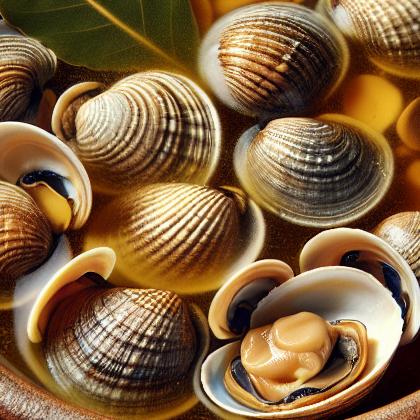Showing results for 'Clam broth'
close
Clam Broth

The term clam generally refers to those bivalve molluscs that live buried in sand or silt, many of which are edible.Clams, like most molluscs, also have open circulatory systems, which means that their organs are surrounded by watery blood that contains nutrients and oxygen. They feed on plankton by filter feeding. Clams filter feed by drawing in water containing food using an incurrent siphon. The food is then filtered out of the water by the gills and swept toward the mouth on a layer of mucus. The water is then expelled from the animal by an ex-current siphon.
Clam broth Pairs With:
Food Item
Flavor Affinity Level
Clam broth Properties:
| Food Property | Type | Description |
|---|---|---|
| Flavor Profile | Salty | Clam broth has a salty flavor due to the natural salt content of clams. |
| Umami | Clam broth has a rich umami flavor from the natural glutamic acid present in clams. | |
| Texture | Moisture | Clam broth is liquid in texture, with a high moisture content. |
| Nutritional Value | Micronutrients | Clam broth is a good source of essential minerals such as iron, zinc, and selenium. |
| Aroma | Volatile Compounds | Clam broth has a distinct seafood aroma due to the volatile compounds released during cooking. |
| Chemical Composition | Acidity/Alkalinity (pH) | Clam broth has a slightly acidic pH level. |
| Cooking Behavior | Heat Conductivity | Clam broth heats up quickly due to its liquid form and high water content. |
Food Pairing App - Version 1.2.0
